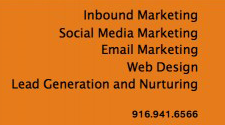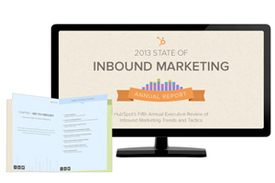You can even do it all yourself - if you take it on systematically.
[caption id="attachment_936" align="aligncenter" width="300" caption="Rocket Ahead with DIY Social Media"]
 [/caption]
[/caption]Before you read on, be honest with yourself. Do you have a written marketing plan that measures results of your current activity? Are you willing to invest the time to learn new marketing strategies and tactics? Are you willing to commit the time on a regular schedule and over the long haul to see them through to results? Are you currently handling all of your own advertising, PR, copy-writing, and collateral creation, production, and placement?
If you answered, "No" to any of these questions, your probably aren't ready to tackle social media marketing on your own and I suggest you look for outside help (or skip it all together, a big mistake in my opinion, but a decision many business make regardless).
1. Learn your customers' buying process.
Whether yours is a B2B or B2C company, your customers repeat a similar process each time they make a significant purchase (read more here). It's important to understand this process in order to make sure you providing them with the best information at the time and place in their process. Track web traffic on your site, when people call or walk in the door, ask where they heard of your business. Start tracking this data. (The more digitally focused your marketing becomes, the more easily track-able this data becomes).
2. Choose your networks.
Once you've begun to learn how your customers and potential customers are finding you and choosing to interact with you, you can begin to build a hierarchy of network importance. Statistics show that most people will use search engines to research products and companies. If you're not showing up well on search or if your search results don't show the strengths of your company. If you don't have them create your Twitter, LinkedIn, Facebook, Google+, and YouTube accounts.
3. Develop your content strategy.
To a company new to the social sphere, I suggest that you take the time first to listen. Are there already things being said about your business on Yelp, YP.com or other sites? What are your competition and businesses you admire doing well with social media. What is there that you can emulate?
The biggest mistake businesses make when moving into social media is that they take their old media advertising and promotion messages along with them. It's not that you can't promote your business, but you need to think about social media like you would a business function. You wouldn't walk right up to a stranger and tell them you're having a special on teeth cleaning. You shouldn't do that on your social networks either. Keep promotional messages to fewer than 255 of your total posts. Use the remainder to start conversations, ask questions, and share your professional knowledge and expertise.
4. Put together your publishing schedule.
What, where, and when are you going to publish? Your blog is posts are key, as are posts on various social networks. The average Facebook post has a shelf life of 3 hours. Because of this, it is recommended that for maximum effectiveness business post 3-4 times each, spreading the posts out by several hours. Twitter moves even faster, and LinkedIn somewhat slower. Work your publishing schedule to make sure you are achieving objectives. I suggest HootSuite and BufferApp as two tools that will help to automate your posts to your predetermined schedule.
5. Engage!
Now that your homework is done and your plan is in place, let it loose! Follow people who folow you. Ask and answer questions. Promote your blog posts. Most importantly, work to create conversations. Social media should not be on-way communications, that's for traditional media.
6. Measure, evaluate, and tweak.
Maybe the best thing about digital media is that everything you do and your customers do can be counted. Free tools such as Google Analytics and HubSpot's Web Site Grader and Blog Grader are great entry points. Facebook Insights are also invaluable. You'll get a great idea of what is working and what isn't. You'll also be able to tack your growth and measure your success.
For some, this can be pretty overwhelming. I suggest you seriously consider whether this is a task to which you are committed. A neglected social media channel will give the impression of a neglected business. If you're only going to have to time to blog twice a year and post to Facebook once a week, you may be dong more harm than good.
For more information on how to quickly grow your company using digital marketing and social media, get our free eBook, How to Stop Looking for Customers and get Them Looking for You! [contact-form-7 id="541" title="Contact form 1"]
If you enjoyed this article and found it useful, please share it with your friends and colleagues using the buttons below!








